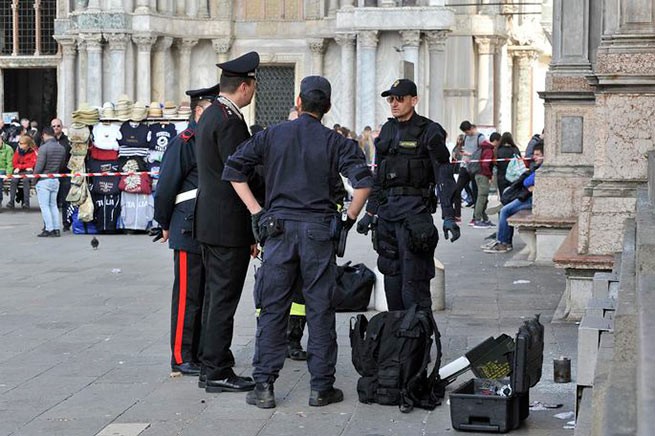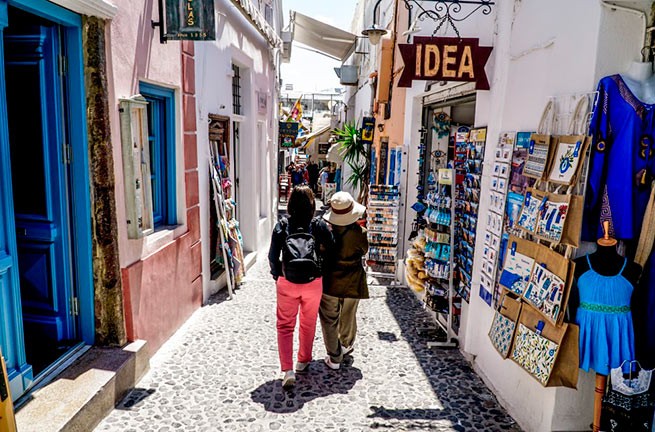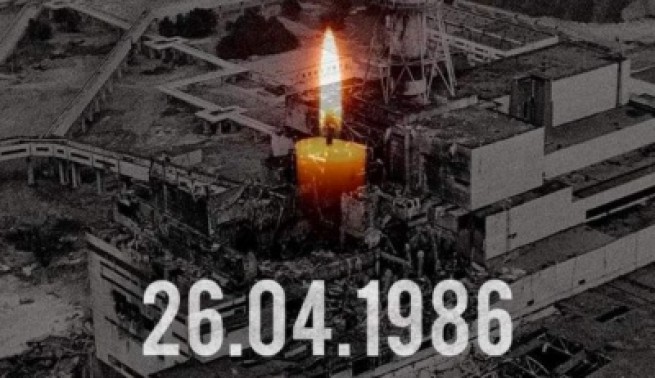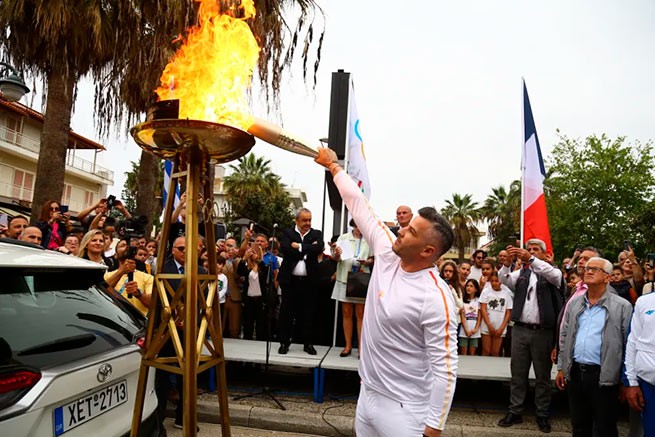Hope dies last… until we get ahead of it. So sadly the Greeks joke about the cyclone “Elpis” (which means “hope”), the bad weather that hit Attica and brought many serious problems to its inhabitants.
The bad weather of Elpis left our country, leaving behind snowy blockages and the fury of citizens towards the authorities, who once again, despite the expected bad weather, nevertheless managed to be “caught by surprise”!
Weather disasters come and go, exposing the government’s inability to act quickly and make decisions at the right moment.
Let us recall the blizzards that have already hit Attica in the past, from the beginning of the 20th century to the present day.
1929
The hard winter began on the day of Ag. Giannis on January 7, 1929, which was a very rare occurrence. Newspapers of that time wrote about snowfall and severe cold in the capital and throughout eastern Greece. A few days later, the natural phenomenon repeated itself: on February 23, the height of the snow cover in the center of Athens reached 30 cm!
The most famous newspaper of that time, Acropolis, wrote: “People, especially the poor, literally found themselves in trouble. Difficult times have come: there is nothing to keep warm, food supplies have run out. After the snow that fell for the second time, citizens had a new alarm. Voices are heard everywhere: pleading, agitating, indignant. But would anyone really dare to protest?
1934: Athens thermometer reads -10°C
It was one of the worst blizzards recorded in the meteorological history archive of Greece. In fact, the minimum air temperature was noted: on February 16, 1934, the thermometer in the Agricultural School showed -10.4 ° C!
“The thickness of the snow, measured by the meteorological service, in the capital, the center of Athens, was 40 cm, and in the suburbs and villages of Attica – much more. Due to the snow, most of the tram lines in the city did not work in the morning. Interruptions were also observed in the work of public services, which functioned inefficiently. Shops on Ermou, Evangelistrias and Mitropoleos streets remained closed until noon. Classes at the school yesterday and today were suspended by order of the Ministry of Education, even the university remained closed. The lack of any municipal intervention (community workers to work to clean up the city) made walking dangerous due to slippery roads and sidewalks. Thus, many were injured and bruised as a result of falls. Due to yesterday’s snowstorm, in particular, in central Greece, the railway, telegraph and telephone were stopped, ”wrote Ελέυθερον Βήμα”.
After 88 years, everything is no longer the same as before, but something still “remains in place.”
1941-42: harsh winter of occupation
The study of available meteorological maps shows that in the winter of 1941-42. “Arctic cold” dominated Europe. Not only Attica, but also Thessaloniki suffered from extreme weather events. The whole country was in the grip of severe bad weather, which had great intensity and duration. The bitter cold was unbearable for the population of Greece. The thermometer needle dropped to six degrees below zero. Athens, and not only, were hungry and cold.
The publication “Μικρό Ρωμηό” wrote: “Recorded air temperatures were unprecedented. The snow that has fallen in the capital since the beginning of January has reached 20-30 cm, and in the suburbs, such as Agia Paraskevi, Chalandri, Kifisia, Ekali and Marousi, it has exceeded 50 cm “The temperature at night dropped to minus 4-5 ° C. To keep warm, the inhabitants of Attica began to cut down trees for firewood in the vicinity, despite the reaction of the German authorities. And when the situation reached the point of no return, the impoverished population cut down trees on the streets of Athens!”
January 1963
The winter of 1962-1963 went down in history as icy (ο Χειμώνας των Πάγων). Throughout Europe, the weather was like the North Pole. In France, the country’s ports were covered with ice, and in Italy, many residents simply froze to death on the streets. Temperatures in Austria dropped to -30°C. Yugoslavia and Bulgaria were buried under a thick layer of snow.
In our country, many described the winter as the worst in the last 100 years. Many people died because of the cold. On January 25, the thermometer in Athens showed -1.4°C. On January 26, it became even colder: the air temperature in the center was -3°C, heavy snowfall.
1964
Snow swept the whole country, and meteorologists agreed that it was a powerful polar anticyclone that came from Siberia and spread all the way to the United States of America. It’s snowing again in Athens – even Syntagma Square is covered with a thin layer of snow.
Trees, streets, cars, roofs of apartment buildings and public buildings of the capital “dressed in white”, the runway of the Elliniko airport froze. Shops and offices are half full and schools are closed. It was characteristic of that time that the police received countless calls, complaints about young people who threw snowballs at women … But besides the games, there were also serious problems: hundreds of people slipped on the streets, getting injured. The ambulance station couldn’t help everyone.
A snow storm in 1964 sent at least 500 people to the hospital! There were hundreds of car accidents, and a 60-year-old taxi driver died of a heart attack while driving. Also, 20 villages in the prefecture of Evrytania were covered with snow. An 84-year-old man died of a cold on his land, and a 35-year-old Corinthian was crushed by snow that fell from the roof of his house.
“It’s a miracle when it snows in Athens and starts to turn white, the city dresses in white clothes, which gives it a fabulous look. Rarely, you see, does our Attic sky offer such a surprise. And when the snow begins to fall, we greet it with joy, as a blessing from God,” Dimitris Psatas wrote then, sitting by the fireplace in his safe, warm home…
1987
Weather historians recorded a cold atmospheric front, designating it as the “cold of 1987”, although the heaviest snowfall occurred in the spring, March, when it snowed for two weeks in a row with short breaks. The bad weather began shortly after Maslenitsa, and from the 4th an unprecedented snowfall began, which was repeated on the 5th, 6th, 8th, 9th, 11th, 12th and 13th of March, with more intense phenomena of the 9th. It was the coldest March in Greece in sixty years. And for Athens – for the last 150 years! In the center of the capital, the height of the snow cover exceeded 15 cm.
2002: Baptism with a Blizzard
In the 90s, snow fell only once in the center and south of Athens (February) 1992.
Further, until January 2002, he was never seen in the center of the capital. Thus, in January 2002, “the first snow of the new millennium” fell. In just half an hour, so much rain fell that the city was literally filled with snow. It was 01/03/2002 when a cold weather front reached Greece through the Balkans. The blizzard began on 01/04/2002 with rain, which gradually turned into snow. That day, a snowstorm literally trapped hundreds of drivers on the Athens-Lamia National Road. In addition, many Athenian drivers got hurt on the streets of the city (old story…).
The height of the snow that fell over two days on January 4 and 5 varied: in the center of Athens and the southern suburbs from 15 to 20 cm, in Kypseli from 20 to 25 cm, in the northern suburbs it reached 50 cm and in the mountainous regions – 1 meter. The snowfall of January 2002 is the longest snowfall in Attica, especially in the northern part of the region and on Evia. Although in its forecasts EMY spoke of an improvement in the weather on January 6 on the day of Epiphany, heavy snowfalls hit Attica. According to eyewitnesses, the snow reached the beaches of Nea Makri and Oropos.
2004
Precipitation fell after midnight on February 12 at Τσικνοπέμπτη (Meat-eater holiday). On the morning of the 13th, Athens appeared dressed in white, all the way to the southern suburbs, Alimos and Paleo Faliro. Snow fell even on the island of Gavdos, at the southernmost point of Europe.
Very low temperatures and stormy winds on the seas were the main features of the bad weather wave. There were huge problems in transport, and schools were again closed. El Venizelos airport remained closed for more than 24 hours. Hundreds of villages were “cut off from the whole world”, most of them in the Peloponnese. It should be noted that in one night a huge amount of snow fell, paralyzing the capital and taking the state mechanism, always ready for action, “by surprise.”
2008: Evil February
On the afternoon of Friday, February 16, snow began to fall, covering the northern outskirts. Then all of Attica turned white. This was the most intense snowfall in Athens, in the center and southern suburbs, for the entire decade 2000-2010. The temperature dropped to -5°C. Everything has changed since Saturday evening, when the bad weather continued with even more intense phenomena. Snow reached 40 cm in some places. Vehicles were driven only with anti-skid chains (even very close to the city center). On the morning of Sunday, February 18, 2008, the situation seemed to have returned to normal in the southern regions of Athens. The occasional snow began to melt. And at noon, everything changed dramatically: it got colder, snow began to fall from heavy clouds. The snowfall lasted 2-3 hours, as a result of which the beaches of Kalamaki and Paleo Faliro were “wrapped in a blanket of snow.”
2021: “Medea”
Cyclone Medea, as it was called, paralyzed Attica in 24 hours, leaving thousands of people without electricity, heating and water. Roads remained closed for several hours, most notably the Athens-Lamia national road, which closed abruptly as the government deemed it necessary to avoid major problems.
Vehicles are immobilized, there are problems with power supply in several areas. Moreover, the damage was eliminated in five to six days! Medea was recognized as deadly, as three people died.
We read the commentary of Vula Kehagia in ethnos.gr: “Having a relative time distance from the arrival of bad weather, one could notice that Medea left its mark more on the state mechanism than on our daily life. Except, of course, for tens of thousands of families who were left (the question is how they survived) without electricity, and in some cases without water – for three or even four days. Some of them still suffer from power supply problems.
The authorities “choked” in a few cm of snow. The state mechanism was paralyzed and showed that it did not even have a plan “B” to cope with severe weather, certainly not the most extreme in the last 20 years, for which it had been preparing for as many as 10 days. No, it was not written today. And last year!
What can we say about Elpis’ bad weather… Days go by, snow remains… I would like to remind you that “our shoulders” still have to withstand a lot of snow, until the rulers of the state, municipalities, Civil Protection show sensitivity to all of us, frozen from their indifference .
And the winter is still on!






More Stories
Today the world remembers the accident at the Chernobyl nuclear power plant
Poll: which European countries are ready to defend their homeland to the last
K. Mitsotakis announced readiness for the fire season